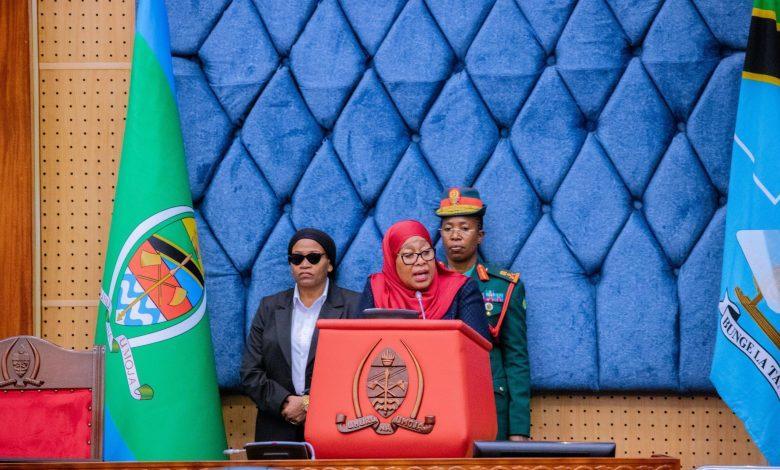Africa-Press – Tanzania. PRESIDENT Samia Suluhu Hassan has revealed that, as of May this year, the public debt stood at 107.7tri/-, comprising 72.94tri/- external debt and 34.76tri/- in domestic debt driven largely by legacy debts and the depreciation of the Tanzanian shilling.
She noted that the rise in public debt has been driven by several factors, including the disbursement of both newly acquired loans and older ones signed under previous administrations, primarily intended to support key development projects.
President Samia made the remarks when she delivered her special speech in the House, marking the conclusion of the activities of the 12th Parliament in Dodoma yesterday She emphasized that while a loan agreement may be signed today, the funds are only disbursed once the government has completed all necessary preparations and the project has officially commenced.
“It is therefore good to realise that the increase in government debt stems from several reasons, one being the receipt of new and old loans whose agreements were signed by previous administrations for development projects,” she noted.
Thus, for a loan to be considered as part of government debt, the government must have received the funds, services, or equipment as agreed.
“Citizens should understand that during the sixth phase government, in addition to signing new loans, the government also received loans signed during previous government phases, thereby increasing the total government debt,” she noted.
For example, during the sixth phase government, the government received 11.3tri/- from loans signed in previous administrations.
Another reason for the increase in government debt is the depreciation of the Tanzanian shilling against the US dollar.
“For instance, in March 2021, the exchange rate was 2,298/- per US dollar, while in March (current year) it was 2,650/- per US dollar.
Therefore, if government debt is expressed in Tanzanian shillings, it will appear larger. For example, debt increased by 3.9tri/- due to exchange rate changes,” the Head of State said.
This depreciation of the shilling against the US dollar should not be seen as a negative development but as an important step to cope with global economic shocks.
Regarding government debt payments, they have increased from 8.22tri/- in 2021/22 to an estimated 14.20tri/- in 2025/26.
“This increase is due to the maturity of long-term loans and commercial loans borrowed during previous presidential terms for implementing development projects,” said Dr Samia.
The rise in foreign debt payments is also influenced by constant fluctuations in international financial markets caused by Covid-19 and changes in US Treasury decisions to alter interest rates on government bonds.
This has made it difficult for developing countries, especially in Africa, to repay their debts on time.
The increase in domestic debt is attributed to more borrowing to finance development projects and to repay matured domestic debts owed to investors holding government bonds by paying the principal amounts due.
Additionally, she said, the government has recognised other debts owed to social security funds through special non-cash government bonds valued at 2.67tri/-.
Of the total amount, 2.18tri/- represents debt owed by the Public Service Social Security Fund (PSSF) to former government employees prior to 1999 (commonly referred to as the pre-1999 debt).
Additionally, 400.71bn/- is long-term debt from the National Social Security Fund (NSSF), and 63.52bn/- pertains to liabilities associated with Pension Property Limited, a public-private partnership company under the pension fund.
This company has financed government projects by providing loans at different times to support projects such as the construction of the Parliamentary Building in Dodoma and Nelson Mandela University in Arusha. These debts were not part of government debt.
The remaining 2.2 tri/- will begin to be recognized over the next three years, starting in the 2025/26 fiscal year. This process will commence with the recognition of TZS 630bn/- in pre-1999 debt and 180 bn/-in National Health Insurance Fund (NHIF) debt, which was incurred to finance the construction of Benjamin Mkapa Hospital in Dodoma.
“The purpose of these measures is to safeguard the social security funds themselves and also ensure that our retirees who have served the nation receive timely benefits,” insisted Dr Samia.
For More News And Analysis About Tanzania Follow Africa-Press







